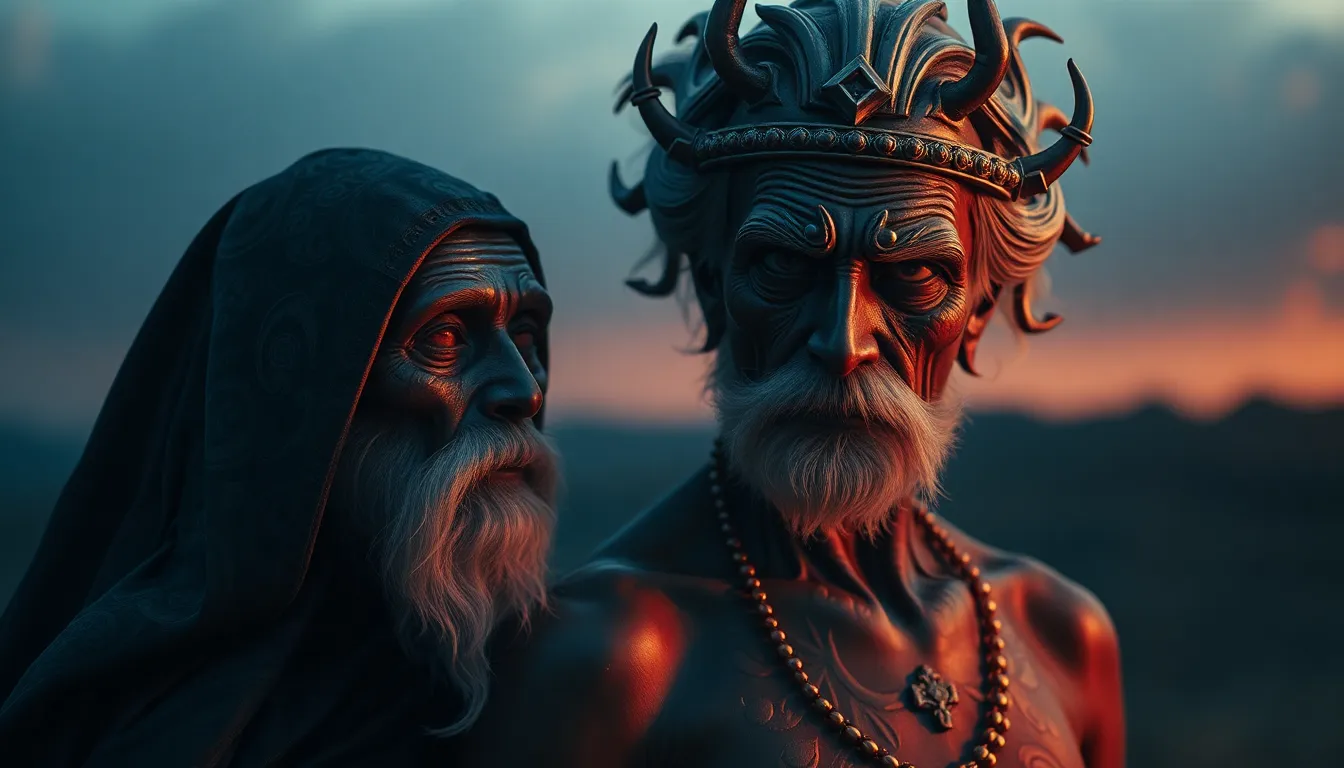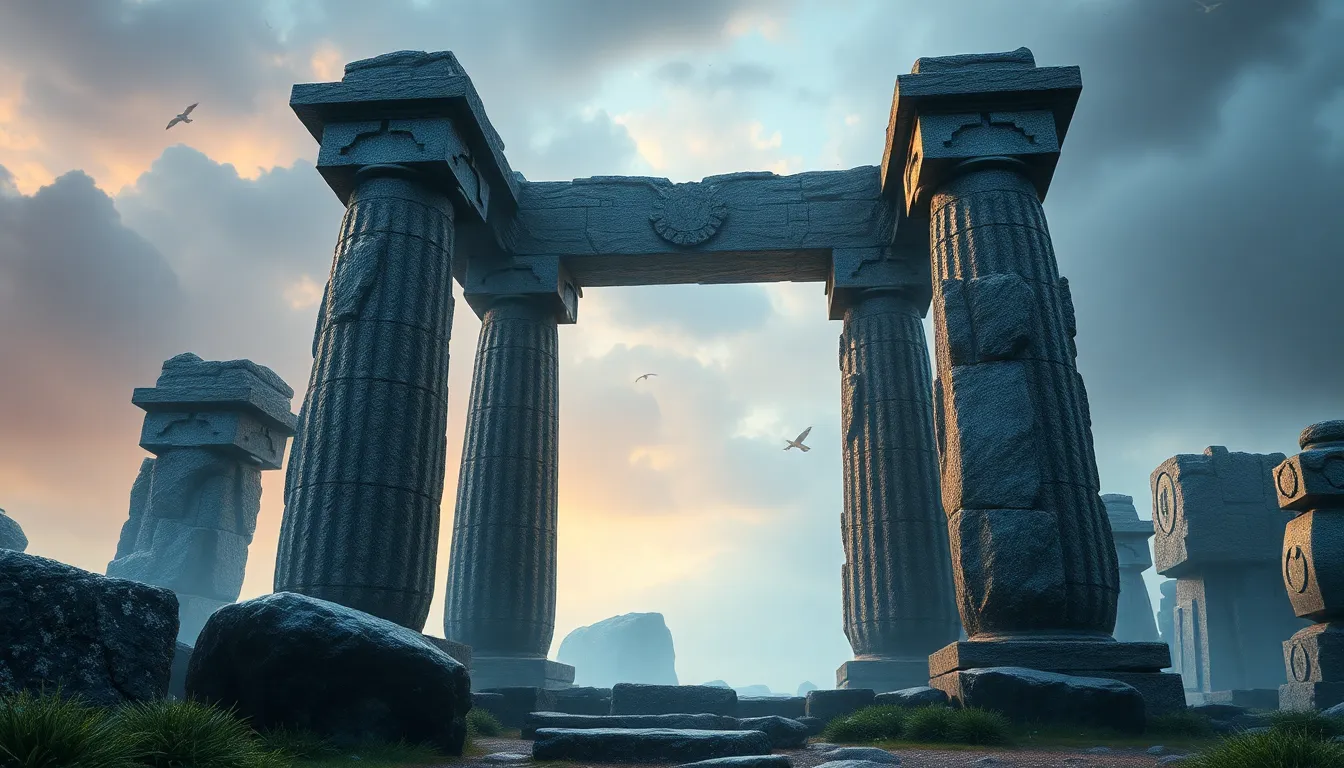The Role of the Priesthood in Mesopotamian Society: Guardians of Myth and Ritual
1. Introduction: Mesopotamia, Land of Myth and Ritual
Nestled between the Tigris and Euphrates rivers, Mesopotamia flourished as a cradle of civilization where complex societies thrived alongside rich mythologies and intricate rituals. At the heart of this vibrant culture stood the priesthood, acting as both custodians of sacred knowledge and expert practitioners of these rituals, playing a key role in shaping the religious and social landscape of Mesopotamia.
2. Divine Hierarchy: Mesopotamian Pantheon and its Importance
The Mesopotamian pantheon boasted a multitude of deities, each embodying specific powers and representing different aspects of the natural world and human experience. Anu, the sky god, reigned supreme. Enlil, the god of air and storms, commanded respect and authority. Inanna, the goddess of love and war, captivated with her beauty and strength. Marduk, the patron deity of Babylon, rose to prominence later, claiming the position of chief god. This hierarchical structure mirrored the Mesopotamian social order, reflecting the values and beliefs of a society deeply intertwined with its gods.
3. The Priesthood: Guardians of Divine Wisdom and Practices
The priesthood, comprising both priests and priestesses, occupied a revered position in Mesopotamian society, serving as intermediaries between the divine realm and humankind. They were entrusted with interpreting the will of the gods, ensuring proper offerings and sacrifices, and performing elaborate rituals designed to maintain cosmic balance and appease the deities. Additionally, priests and priestesses served as educators, responsible for preserving and transmitting religious knowledge across generations, ensuring the continuity of Mesopotamian traditions.
4. Myth and Ritual: Intertwined Threads of Mesopotamian Life
In Mesopotamian society, myth and ritual were inextricably intertwined. Myths provided narratives that explained the origins of the universe, the creation of humanity, and the roles of the gods. Rituals, in turn, served as enactments of these myths, reinforcing social order and solidifying religious beliefs. Through these ritualistic enactments, Mesopotamians reaffirmed their connection to the divine and sought to maintain harmony in both the earthly and celestial realms.
5. Creation Myths: Shaping the Mesopotamian Worldview
The Enuma Elish, a renowned Mesopotamian creation myth, narrates the dramatic struggle between the god Marduk and the primordial goddess Tiamat, ultimately resulting in the creation of the world and humanity. Understanding this myth sheds light on the Mesopotamian worldview, revealing their conception of the cosmos and humanity's place within it. The Enuma Elish also served to legitimize Marduk's ascension to the position of chief god, reflecting the shifting political landscape of Mesopotamia. Other creation myths, such as the Atrahasis epic, further enriched the Mesopotamian understanding of the world and humanity's relationship with the divine.
6. Temple Life: The Center of Religious Activity
Mesopotamian temples served as the focal point of religious life, majestic structures towering over cities and representing the earthly dwelling places of the gods. Built with mud-brick or stone, these temples often featured towering ziggurats, stepped pyramids with sanctuaries dedicated to specific deities. Within the temple walls, daily rituals unfolded, ensuring the gods' continued favor and maintaining cosmic harmony. Priests and priestesses performed elaborate offerings, including sacrifices, prayers, and hymns, seeking to appease the divine and secure their protection. Grand festivals celebrated throughout the year drew large crowds of worshippers, solidifying community bonds and reaffirming religious beliefs.
7. Divination: Seeking Signs from the Divine
Divination, the art of interpreting signs from the gods, played a pivotal role in Mesopotamian religion. Through various methods, including astrology, extispicy (examining animal entrails), and dream interpretation, priests and priestesses sought to decipher the will of the gods and guide decision-making in matters of state, war, and personal life. The practice of divination served as a bridge between the human and divine realms, offering reassurance and guidance in a world where the future remained uncertain.
8. Afterlife Beliefs: A Journey to the Underworld
Mesopotamians believed in an afterlife, a shadowy realm beneath the earth where souls continued their existence. This underworld was ruled by the goddess Ereshkigal and her husband Nergal, and the journey there was perilous, filled with trials and tribulations. Good deeds during life could earn favor, ensuring a more comfortable existence in the afterlife, while those who displeased the gods faced a bleak and sorrowful fate. Mesopotamian funerary practices reflected these beliefs, with elaborate tombs and burial rituals aimed at aiding the deceased on their journey to the underworld.
9. Literature and Mythology: A Rich Tapestry of Stories
Mesopotamian literature boasts a rich tapestry of stories and myths, offering insights into the beliefs, values, and worldview of this ancient civilization. The Epic of Gilgamesh, a timeless tale of friendship, mortality, and the search for immortality, stands as a masterpiece of Mesopotamian literature. Other notable works include the Atrahasis epic, recounting a devastating flood and humanity's survival, and the Descent of Inanna, a myth exploring the goddess's perilous journey to the underworld. These tales served as sources of entertainment, moral instruction, and philosophical contemplation, enriching the lives of Mesopotamians across generations.
10. Conclusion: The Enduring Legacy of the Mesopotamian Priesthood
The Mesopotamian priesthood, as guardians of myth and ritual, played an integral role in shaping the religious, social, and cultural landscape of this ancient civilization. Their expertise in interpreting divine messages, maintaining temple rituals, and preserving sacred knowledge ensured the continuity of Mesopotamian traditions for centuries. While the empires of Mesopotamia have long since crumbled, their legacy lives on in the myths, rituals, and literary works that continue to captivate and inspire us today.
FAQ
What was the role of the priesthood in Mesopotamian society?
The priesthood served as intermediaries between the gods and humans, performing rituals, interpreting omens, and maintaining temples. They were also responsible for preserving and transmitting religious knowledge.
What was the relationship between myth and ritual in Mesopotamian society?
Myth and ritual were closely intertwined. Myths provided narratives that explained the origins of the universe and humanity's place within it, while rituals served as enactments of these myths, reinforcing social order and religious beliefs.
What were the main Mesopotamian creation myths?
The most prominent Mesopotamian creation myth is the Enuma Elish, which tells the story of Marduk's battle with Tiamat and the creation of the world. Other important creation myths include the Atrahasis epic and the Erra epic.
What was the Mesopotamian afterlife like?
Mesopotamians believed in an underworld ruled by Ereshkigal and Nergal. The afterlife was a shadowy realm where souls continued their existence, with good deeds earning favor and bad deeds leading to suffering.
What are some famous Mesopotamian literary works?
The Epic of Gilgamesh, the Atrahasis epic, and the Descent of Inanna are among the most famous Mesopotamian literary works. These stories offer insights into Mesopotamian beliefs, values, and worldview.



